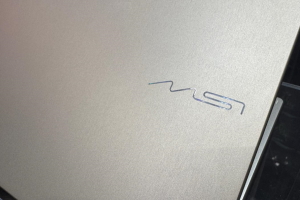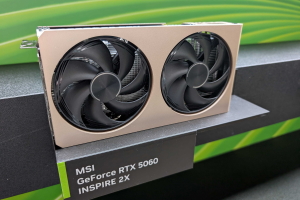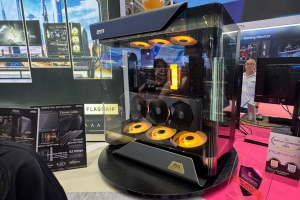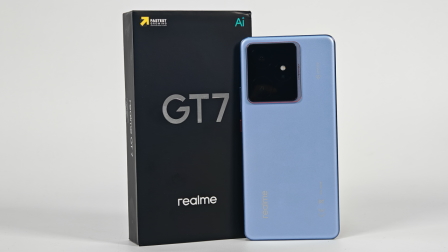NVIDIA Tegra 4i negli smartphone sono da inizio 2014

E' la stessa NVIDIA, durante una presentazione agli analisti finanziari, a confermare come Tegra 4i sia stato presentato in ritardo e che ci si attenda vendite smartphone con questo SoC a partire dall'inizio del prossimo anno
di Paolo Corsini pubblicata il 22 Marzo 2013, alle 12:11 nel canale TelefoniaNVIDIATegra










 DJI Mavic 4 Pro: sblocca un nuovo livello per le riprese aeree
DJI Mavic 4 Pro: sblocca un nuovo livello per le riprese aeree Idrogeno verde in Europa: nuovi studi prevedono costi ben superiori alle aspettative
Idrogeno verde in Europa: nuovi studi prevedono costi ben superiori alle aspettative Mario Kart World lancia Switch 2: la magia Nintendo ora in 4K
Mario Kart World lancia Switch 2: la magia Nintendo ora in 4K Scambio di chiavi quantistico via satellite: Colt, Honeywell e Nokia ci provano. Ma ha senso?
Scambio di chiavi quantistico via satellite: Colt, Honeywell e Nokia ci provano. Ma ha senso? HONOR 400 è un successo! Forte slancio nelle vendite con un +400%
HONOR 400 è un successo! Forte slancio nelle vendite con un +400% Redmi Pad 2, i nuovi tablet Xiaomi costano a partire da 200 euro: ecco le novità
Redmi Pad 2, i nuovi tablet Xiaomi costano a partire da 200 euro: ecco le novità All'aeroporto di Fiumicino il più grande sistema di accumulo italiano con batterie EV usate
All'aeroporto di Fiumicino il più grande sistema di accumulo italiano con batterie EV usate HONOR 400 vs HONOR 400 Pro: tutte le differenze, le specifiche e i punti di forza a confronto
HONOR 400 vs HONOR 400 Pro: tutte le differenze, le specifiche e i punti di forza a confronto Nintendo Switch 2 debutta oggi nei negozi! Prezzo e dettagli
Nintendo Switch 2 debutta oggi nei negozi! Prezzo e dettagli Samsung Galaxy S25 Edge è disponibile in Italia! Lo smartphone sottile, potente e intelligente come mai prima
Samsung Galaxy S25 Edge è disponibile in Italia! Lo smartphone sottile, potente e intelligente come mai prima  Nothing presenterà le sue prime cuffie over-ear il prossimo 1° luglio insieme a Phone(3)
Nothing presenterà le sue prime cuffie over-ear il prossimo 1° luglio insieme a Phone(3)  Le nuove soluzioni Lenovo per lo storage e oltre: ThinkAgile, ThinkSystem e gli AI Starter Kit
Le nuove soluzioni Lenovo per lo storage e oltre: ThinkAgile, ThinkSystem e gli AI Starter Kit Netatmo presenta la nuova Stazione Meteo ORIGINAL: aggiornata, potenziata con misurazione pollini e UV
Netatmo presenta la nuova Stazione Meteo ORIGINAL: aggiornata, potenziata con misurazione pollini e UV Cybersecurity: Fortinet rende disponibile Workspace Security Suite e aggiorna FortiDLP
Cybersecurity: Fortinet rende disponibile Workspace Security Suite e aggiorna FortiDLP Netatmo Stazione Meteo ORIGINAL: il ritorno di un’icona, più smart che mai
Netatmo Stazione Meteo ORIGINAL: il ritorno di un’icona, più smart che mai Il meglio dello State of Play, dal nuovo titolo di Suda51 alla collezione più completa di Mortal Kombat
Il meglio dello State of Play, dal nuovo titolo di Suda51 alla collezione più completa di Mortal Kombat Homematic IP: nuova app per ottimizzare i flussi energetici della casa
Homematic IP: nuova app per ottimizzare i flussi energetici della casa



















14 Commenti
Gli autori dei commenti, e non la redazione, sono responsabili dei contenuti da loro inseriti - infoMa cercando info riguardo l' S600 le più "vecchie" che trovo riguardano il CES 2013 e tra poco lo si troverà già negli smartphones in commercio. Qualcuno più bravo di me riesce a trovare la presentazione dell' S600 datata 12 mesi fa ? O è un' abitudine solo di nVidia quella di presentare un chip con così largo anticipo rispetto a quando lo si troverà effettivamente su dispositivi in commercio ?
Sì ma l'S600 non è altro che lo Snapdragon S4 Pro (sempre di Krait si parla, Qualcomm ha solo rinominato la sua gamma in 200-400-600), quindi la sua presentazione risale effettivamente al 2012
in realtà sono diversi è un evoluzione
snapdragon 400 è basato su core krait ed è s4 pro
snapdragon 600 è basato su krait 300
snapdragon 600 è basato su krait 400
ora le varie differenze non le so ma sono cmq delle revision.
Se guardi le specifiche vedrai che Snapdragon S600 monta lo stesso chip APQ8064 di S4 Pro.
Magari ci sarà qualche ottimizzazione ma non si tratta di una nuova architettura, come nel caso di Tegra 4i
Se guardi le specifiche vedrai che Snapdragon S600 monta lo stesso chip APQ8064 di S4 Pro.
Magari ci sarà qualche ottimizzazione ma non si tratta di una nuova architettura, come nel caso di Tegra 4i
non cambiano solo nomi e frequenza tra krait 200 e 300
Krait 300
In usual Qualcomm fashion, we're missing good depth on exactly what these new revisions deliver. This is one area where Qualcomm really needs to emulate Intel: we know more about Haswell than we do about the original Krait.
That being said, here's what we do know. Krait 300 is still built on TSMC's 28nm LP process, just like the original Krait. The pipeline remains unchanged, but Qualcomm is able to squeeze out higher clocks out of the core. It's unclear whether we're simply talking about voltage scaling or a combination of that and improvements to timing, yields and layout. Whereas the current Krait core tops out at around 1.5GHz, Krait 300 will run at up to 1.9GHz.
Another big addition to the architecture is Krait 300 now features a hardware data prefetcher that preemptively grabs data out of main memory and brings it into L2 cache. The original Krait core had no L2 prefetchers.
Single threaded IPC improvements are the name of the game with Krait 300 and like all good evolutions to microprocessor architectures, the new Krait improves branch prediction accuracy. Since there's no increase to pipeline depth, improved branch prediction directly results in improved IPC (and better power efficiency).
Both Qualcomm and ARM have been very vague about what types of instructions can be executed out of order, but Krait 300 can execute more instructions out of their original program order. Building a robust OoOE (Out of Order Execution Engine) is very important to driving higher performance, and being able to reorder more types of instructions directly impacts single threaded performance.
Krait 300 now supports forwarding between pipelines, although it's not clear whether or not the previous architecture lacked any ability to forward data between stages.
Finally Krait 300 improves FP and JavaScript performance. Once again, it's not clear how. I've asked Qualcomm whether there have been any changes to the execution units in Krait 300 to enable these improvements. In general I believe we're looking at around a 15 percent increase in performance at the same clock frequency, for a jump of 20 to 30 pecent overall with the clock increases. This isn't necessarily enough to close the gap between Krait 300 and ARM's Cortex A15, however Krait 300's power profile should be much better. Compared to Atom, the Krait 300 improvements should be enough to at least equal performance if not surpass it, but not necessarily significantly.
Devi effettuare il login per poter commentare
Se non sei ancora registrato, puoi farlo attraverso questo form.
Se sei già registrato e loggato nel sito, puoi inserire il tuo commento.
Si tenga presente quanto letto nel regolamento, nel rispetto del "quieto vivere".